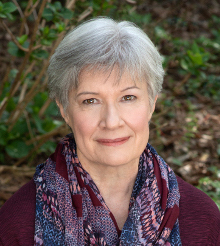About Face
by Kathryn Schwille
 Suppose you’ve been invited to a wedding reception where you know almost no one. What do you do after you accept a glass of champagne from the waiter with two eyebrow rings, a pointed nose, and prominent pink cheekbones? You’re in an unfamiliar social setting, so you survey the faces. Are these your kind of people? Will you find friendly conversation here? Physically you’re safe, but are you socially safe? You’ve started your survey with this waiter. Did someone recently embarrass him, or is he just wearing a touch of makeup?
Suppose you’ve been invited to a wedding reception where you know almost no one. What do you do after you accept a glass of champagne from the waiter with two eyebrow rings, a pointed nose, and prominent pink cheekbones? You’re in an unfamiliar social setting, so you survey the faces. Are these your kind of people? Will you find friendly conversation here? Physically you’re safe, but are you socially safe? You’ve started your survey with this waiter. Did someone recently embarrass him, or is he just wearing a touch of makeup?
Long before we learn to read words, we learn to read faces. Just watch a baby who can’t take her eyes off yours. For animals, reading faces can be a survival skill. Equine scientists tell us horses like smiles and can be worried by frowns.
People need survival skills, too, even if we’re just trying to socially “survive” a room full of strangers. So why not give precise attention to the faces of our characters? Your protagonist might find herself next to a man whose smile she describes as hideous. It’s possible she just doesn’t like the guy’s looks, or that the elderly gent is trying to conceal a quiet rage. Either way, his smile brings the moment a bit of conflict — narrative’s best friend.
Here is a slice from William Trevor’s short story, “Bodily Secrets.” The widowed Mrs. O’Neill is in the golf club bar considering the available men, one of whom is coming towards her.
“Corkin, the widower of the woman who’d been a drear, approached her with the usual sorrowful look in his eyes, as if he still mourned the wife who had played neither bridge nor golf. The eyes themselves, lurking in their despondent wateriness behind spectacles, had pinkish rims and were the only feature you noticed in Corkin’s flat face, except possibly his teeth, which moved uncomfortably in his jaw when he ate. He was eating now, chewing crisps from a transparent Tayto bag.”
Mrs. O’Neill didn’t care for the first Mrs. Corkin and has no interest in becoming the second. How much the narrator’s description of Corkin’s face reveals about Mrs. O’Neill as well as the Corkins, living and dead! Corkin is munching Irish potato chips, which gives his face movement that catches our eye. The narrator doesn’t tell us what flavor of chips, but my money’s on Cheese and Onion. She would find the smell annoying.
Here are questions we can ask ourselves as we set out to describe a character. What would the point of view character observe about a face and why? Is there a moving part? Is there menace, or sweetness or disinterest radiating from that character? How might this show in the face? How can we move beyond the brown eyes, bushy eyebrows, bald head or pointed chin? Do those almond-shaped eyes prowl below eyebrows or pop? What else can be said of the hairline, the dimple, the thin lips?
In the middle of writing this piece, I stopped to look at a story I’m drafting, in which my protagonist describes his nemesis, a woman named Inez. After many drafts, his description of her face is still, well, meh. It could be better. In the next draft he will look at her more closely. Perhaps he will discover that beneath her well-furnished brows, Inez is pathetically devoid of eyelashes. And there, thank heaven, will be one more bubble of simmering conflict.
Learn How to Read Like a Writer with Kathryn
TUESDAY, SEPTEMBER 17: “Read Like a Writer: Two Irish Writers,” 6:00–8:00 p.m., virtual via Zoom. Info and registration
Explore fiction by learning how to read like a writer — alert to the craft on the page. Kathryn Schwille leads the class through a close look at stories by the Irish writers Claire Keegan and William Trevor. We’ll pay particular attention to their decisions about point of view, minor characters, and what to do with a crowd.
Members save $15 on this class. Log in as a member or join to receive discount.
About Kathryn
Kathryn Schwille is the author of the novel, What Luck, This Life, selected by the Atlanta Journal-Constitution as one of the best Southern books of 2018. Her short stories have appeared in New Letters, Memorious, Crazyhorse, Literary Hub and other journals, and have twice been cited for Special Mention in the Pushcart Prize. A recipient of an Artist Fellowship from the North Carolina Arts Council, she’s led fiction workshops for 20 years.
